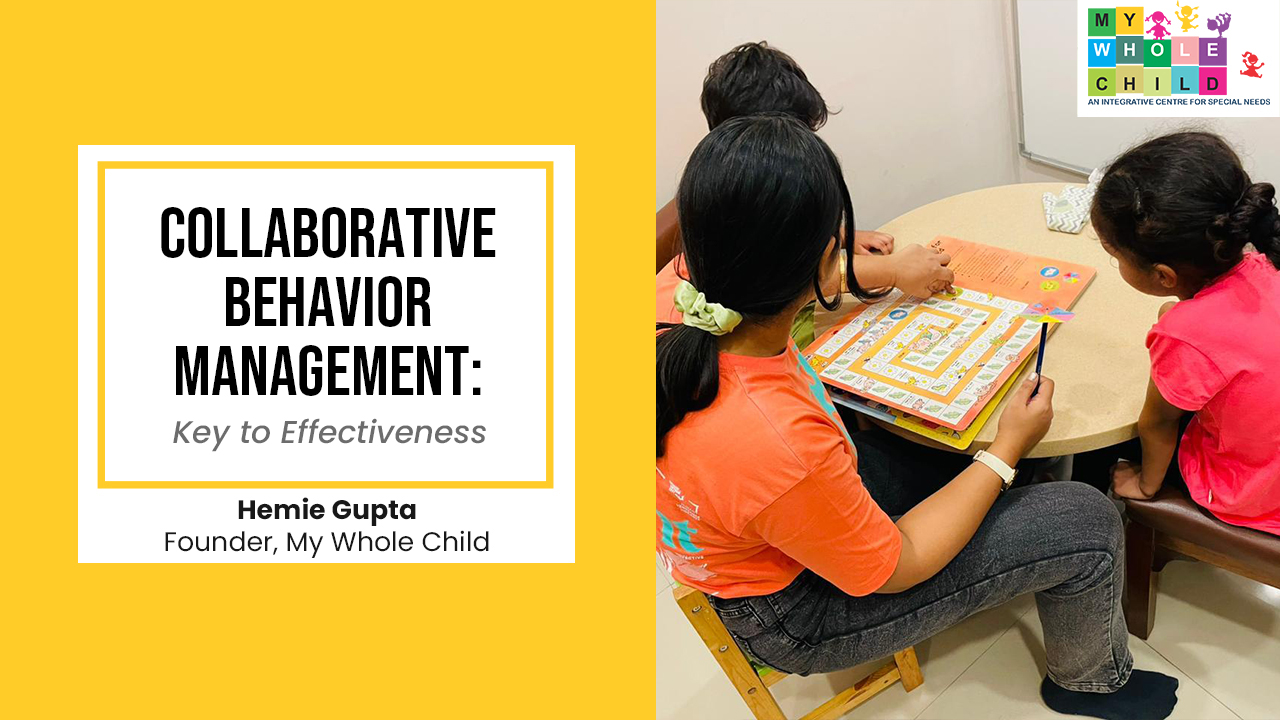mwcgk2@gmail.com S-Block, Gurudwara Nanaksar Premises, Greater Kailash-II, New Delhi-48
Collaborative Behavior Management: Key to Effectiveness
admin - December 6, 2024
Behavior management is a crucial aspect of promoting positive behaviors and addressing challenging behaviors in children and adolescents. While many approaches exist, one highly effective method is collaborative behavior management. Collaborative behavior management involves the active involvement and partnership of parents, teachers, and professionals to create a consistent and supportive environment for the child. This blog explores the benefits of collaborative behavior management and highlights the importance of involving all stakeholders in the process.
Establishing Consistency: Consistency is key when it comes to behavior management. When parents, teachers, and professionals work collaboratively, they can establish consistent expectations and consequences across different environments, such as home, school, and therapy sessions. This consistency helps children understand and internalize the expected behaviors, making it easier for them to adapt and thrive.
Holistic Understanding of the Child: By involving parents, teachers, and professionals, a comprehensive understanding of the child’s behavior patterns, strengths, and challenges can be gained. Each stakeholder brings unique insights and observations, enabling a more holistic assessment of the child’s needs. This collaborative approach allows for the development of targeted interventions that address the underlying causes of challenging behaviors, rather than merely focusing on surface-level symptoms.
Individualized Behavior Plans: Collaboration among parents, teachers, and professionals enhances the development of individualized behavior plans. By pooling their expertise, stakeholders can create a plan that considers the child’s specific needs, strengths, and preferences. This customized approach increases the plan’s effectiveness, as it is tailored to the child’s unique circumstances.
Shared Strategies and Interventions: Collaboration enables the sharing of effective strategies and interventions among stakeholders. Parents can share successful techniques they have used at home, teachers can contribute classroom management strategies, and professionals can bring evidence-based interventions to the table. This exchange of knowledge empowers everyone involved and expands the range of options available for behavior management.
Consistent Reinforcement: In collaborative behavior management, consistency extends to reinforcement strategies as well. When parents, teachers, and professionals align their reinforcement approaches, it strengthens the child’s understanding of appropriate behaviors and reinforces their positive efforts consistently. This unified approach prevents confusion and provides the child with clear expectations across various settings.
Enhanced Communication and Support: Collaborative behavior management fosters open lines of communication among stakeholders. Regular meetings, progress updates, and shared documentation facilitate the exchange of information and ensure everyone is on the same page. Effective communication also allows for timely intervention adjustments and support, promoting the child’s overall progress and well-being.
Conclusion:
Collaborative behavior management harnesses the power of partnerships among parents, teachers, and professionals to create a consistent and effective approach to addressing challenging behaviors. By working together, these stakeholders can provide the child with a supportive, structured environment that promotes positive behaviors, maximizes their potential, and enhances their overall quality of life. By embracing collaboration, we can truly make a positive difference in the lives of children and adolescents facing behavior challenges.
Latest Posts

Embracing Uniqueness: A Journey of Love and Learning
March 22, 2025
Bringing Color to Every Life: Holi as a Festival of Unity
March 14, 2025
Being a Woman—I am a lot of things together
March 8, 2025

